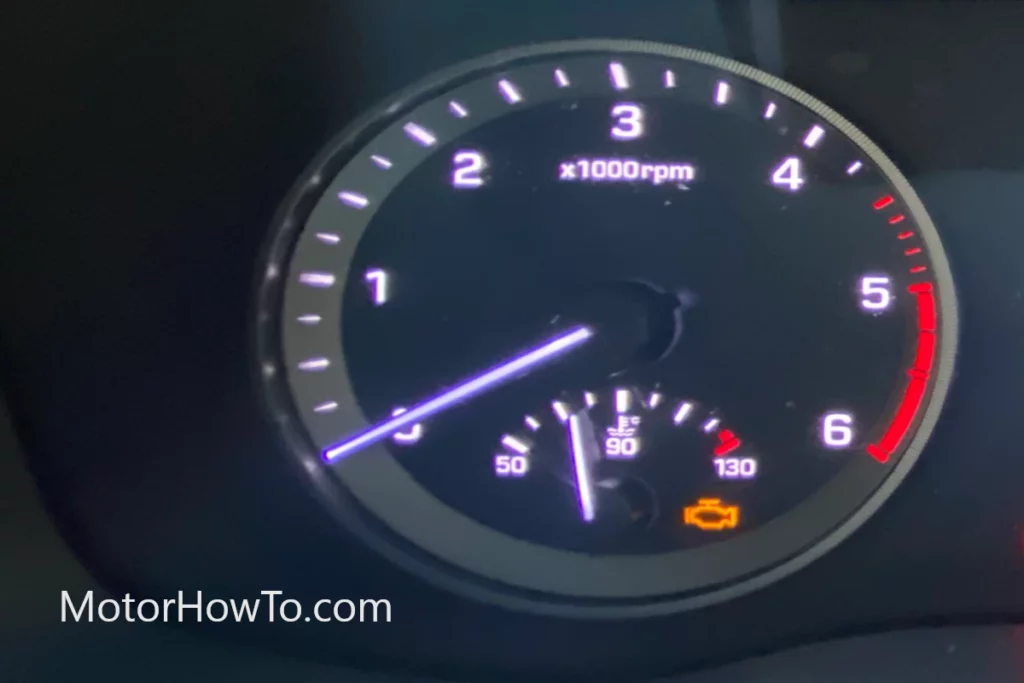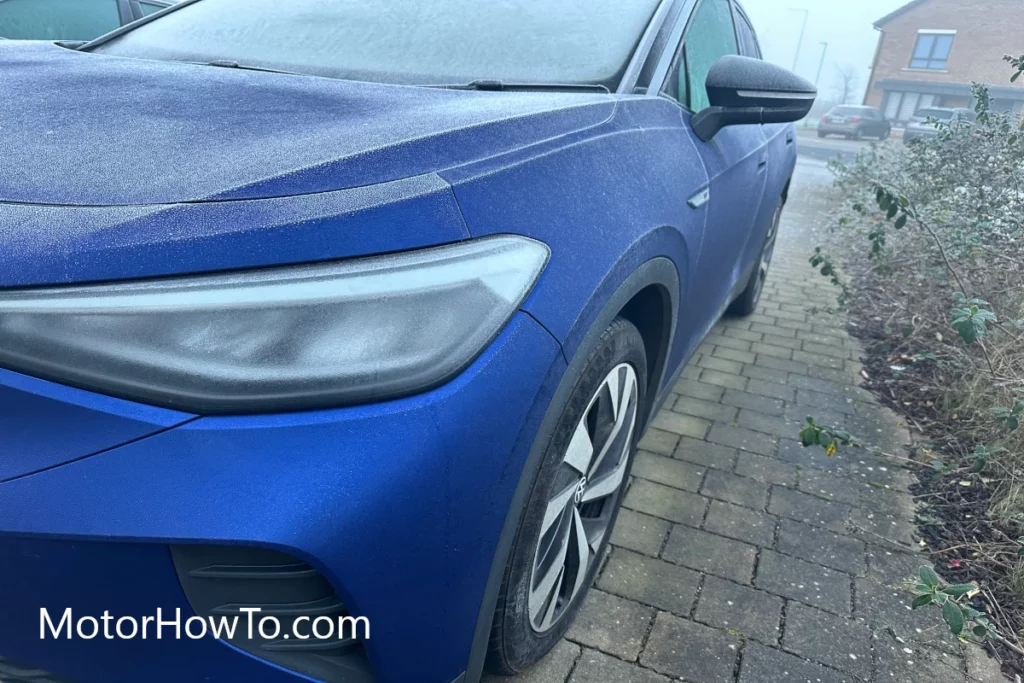The Toyota Prius is a popular hybrid car known for its impressive fuel efficiency and eco-friendly features.
However, like any vehicle, it is not immune to the occasional malfunction or issue that triggers the dreaded “check engine” warning light.
While it can be concerning to see this warning appear on the dashboard, it is important to know that you can take steps to reset the light and diagnose the underlying problem.
To reset the “check engine” warning indicator light on a Toyota Prius, use an OBD-II scanner or disconnect the battery for 15+ minutes, then reconnect. If the problem persists, get a diagnosis.
- How Do You Reset The Check Engine Light With A Gas Pedal?
- How Many Miles Do You Have To Drive After Resetting Your Check Engine Light?
- What Are Common Check Engine Light Codes On Toyota Prius?
- Is It Ok To Drive Your Toyota Prius With The Check Engine Indicator Light On?
- Is It Ok To Clear Check Engine Codes On Toyota Prius?
- Conclusion
- Sources

In this article, we will explore the different methods you can use to reset the “check engine” warning indicator light on your Toyota Prius and the potential reasons why it may have turned on in the first place.
From utilizing a diagnostic tool to performing a manual reset, we will provide you with the information you need to safely and effectively handle this common issue.
Related:
- Is It Bad To Run AC In Idle? (Might Surprise You)
- What Does The Power Steering System Warning Light Mean? (Explained)
- What Is A High Beam Indicator? (Simple Guide)
How Do You Reset The Check Engine Light With A Gas Pedal?
Resetting the “check engine” warning light using the gas pedal is a relatively simple process that can be done in just a few minutes.
This method is specific to certain Toyota models, including the Camry, Corolla, and Prius, and may not work on other vehicles.
It is important to note that this method only resets the light and does not diagnose or address any underlying issues.
Ensure the car is turned off and the key is removed from the ignition. Once confirmed, press and hold down the gas pedal for 5 seconds. Hold the gas pedal down for another 5 seconds, then release it.
If done correctly, the “check engine” warning light should start flashing. Reset the light by holding down the gas pedal for 5 seconds, turning the ignition to “on,” and releasing the pedal.
Count the number of flashes, indicating the diagnostic trouble code (DTC) that triggered the light. Find a list of DTCs and their meanings in the owner’s manual or online.
How Many Miles Do You Have To Drive After Resetting Your Check Engine Light?
You must drive no specific number of miles after resetting your “check engine” warning light.
The amount of time it takes for the light to come back on will vary depending on several factors, including the severity of the underlying issue and the driving conditions.
When the “check engine” warning light is reset, the car’s onboard computer will monitor the vehicle’s systems again.
If the issue that triggered the light in the first place has not been resolved, the light will likely come back on fairly quickly.
Sometimes, the light may come back on immediately after the car starts.
Driving any vehicle with the “check engine” warning light indicator on can cause damage to your vehicle and result in more costly repairs down the line.
If the light comes back on after resetting it, it is recommended that you take your car to a certified mechanic as soon as possible to have the underlying issue diagnosed and repaired.
What Are Common Check Engine Light Codes On Toyota Prius?
The Toyota Prius is a popular hybrid car known for its fuel efficiency and advanced technology. However, like any vehicle, the Prius can experience issues that cause the “check engine” warning light to turn on. Here are some of the common check engine light codes that Prius owners may encounter:
- P0A80 – This code indicates a problem with the hybrid battery pack. The most common cause of this code is a failed cell or module within the battery pack, which can lead to reduced fuel economy and overall performance.
- P0AA6 – This code indicates a problem with the engine control module (ECM), which controls the hybrid system. This can be caused by issues such as a faulty sensor or wiring problem.
- P0A7A – This code indicates a problem with the hybrid cooling system, which helps regulate the temperature of the battery pack and other components. A malfunctioning cooling fan or sensor can cause this.
- P1121 – This code indicates a problem with the coolant flow control valve, which can cause the engine to run hotter than normal. This can be caused by a clogged or stuck valve, which can impact overall performance and fuel efficiency.
Suppose the “check engine” warning indicator light on any vehicle or Toyota Prius specifically comes on. Continuing to drive with the check engine indicator light on can cause more damage to the vehicle and lead to costly repairs down the line. In that case, it is important to have the code diagnosed by a certified mechanic to identify the underlying issue and make any necessary repairs.
Is It Ok To Drive Your Toyota Prius With The Check Engine Indicator Light On?
It is generally not recommended to drive a Toyota Prius with the “check engine” warning indicator light on.
The “check engine” warning light is an important warning indicator that signals a problem with the vehicle that requires attention. Ignoring the light and continuing to drive the car could cause further damage and increase the risk of more costly repairs down the line.
Furthermore, driving a Prius with the “check engine” warning indicator light on can result in decreased fuel efficiency and increased emissions, which can harm the environment.
Additionally, if the issue that triggered the light is related to safety systems, such as the brakes or airbags, it could put you and your passengers at risk if not addressed promptly.
If the “check engine” warning light is on, it is recommended that you take your car to a certified mechanic as soon as possible to have the underlying issue diagnosed and repaired. Ignoring the light and continuing to drive the car could ultimately lead to more serious and expensive problems.
Is It Ok To Clear Check Engine Codes On Toyota Prius?
After diagnosing and addressing the underlying issue, it is generally only recommended to clear “check engine” warning codes on a Toyota Prius. Clearing the codes will turn off the check engine light, but it will not fix the problem that triggered the code in the first place.
This expensive component helps reduce emissions. In addition, clearing the codes without fixing the underlying issue can lead to further damage to the vehicle.
For example, if the “check engine” warning light is on due to a misfiring engine, continuing to drive the car without addressing the issue could cause damage to the catalytic converter.
Furthermore, clearing the codes before taking the car to a mechanic can make it more difficult to diagnose the issue, as the mechanic may need access to the code history. This can lead to more time and money spent diagnosing and fixing the problem.
The “check engine” warning light is on your Toyota Prius. Have the code diagnosed by a certified mechanic to identify the underlying issue and make repairs. Once the issue has been addressed and fixed, the mechanic can reset the “check engine” warning light.
Conclusion
The “check engine” warning indicator light on a Toyota Prius can be triggered by various issues, from simple malfunctions to more complex system failures. It is essential to determine the underlying issue through diagnostic tools or professional assistance.
However, regardless of the underlying cause, it is important to take action once the light appears to prevent potential damage and more expensive repairs down the line. You can use various methods to reset the “check engine” warning light, including the gas pedal technique.
It is not recommended to drive a Toyota Prius with the “check engine” warning indicator light on, as it can lead to decreased fuel efficiency, increased emissions, and even risks to safety systems.
Additionally, resetting the “check engine” warning light without identifying and fixing the underlying issue can mask the problem and allow it to worsen.
Thus, it is best to have a certified mechanic diagnose and address any problems, rather than simply clearing the “check engine” warning light codes, to ensure the longevity and reliability of your vehicle.
Sources
Prius Check Engine Light Reset – How To?
How Many Miles to Drive After Resetting Check Engine Light
Is it Safe to Drive Your Car With the Check Engine Light On?



